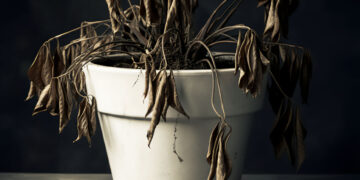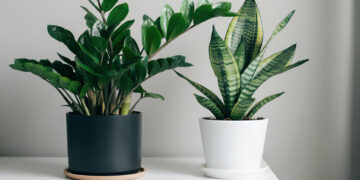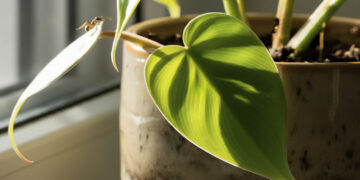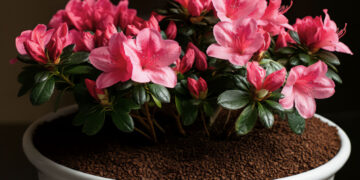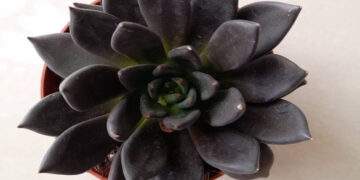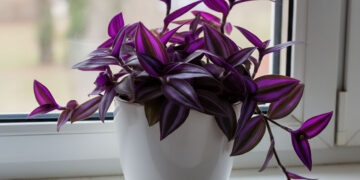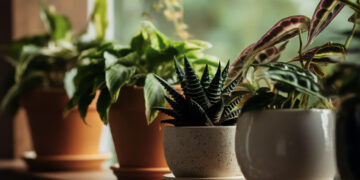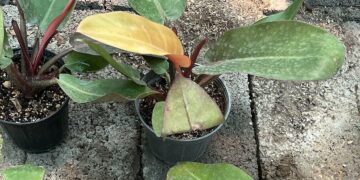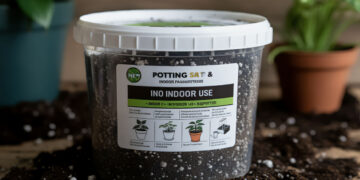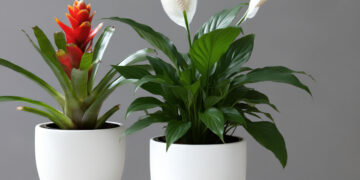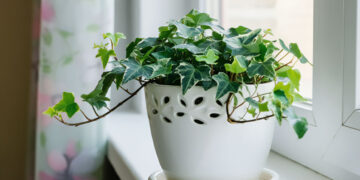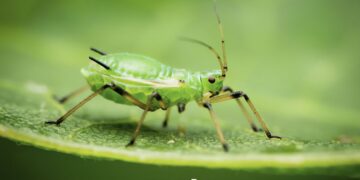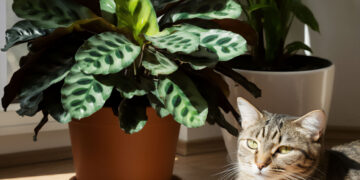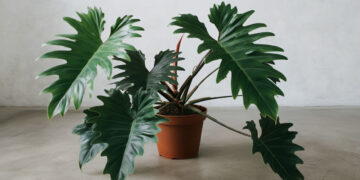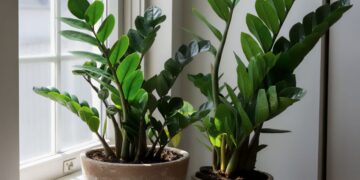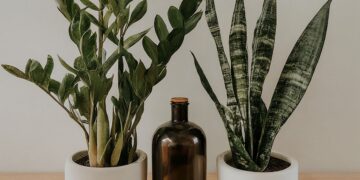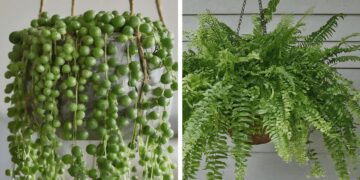I tried to explain the essential points to consider before buying or making soil for houseplants in a simple and concise way. But if you have any questions, feel free to ask me in the comments—I’d be happy to help.
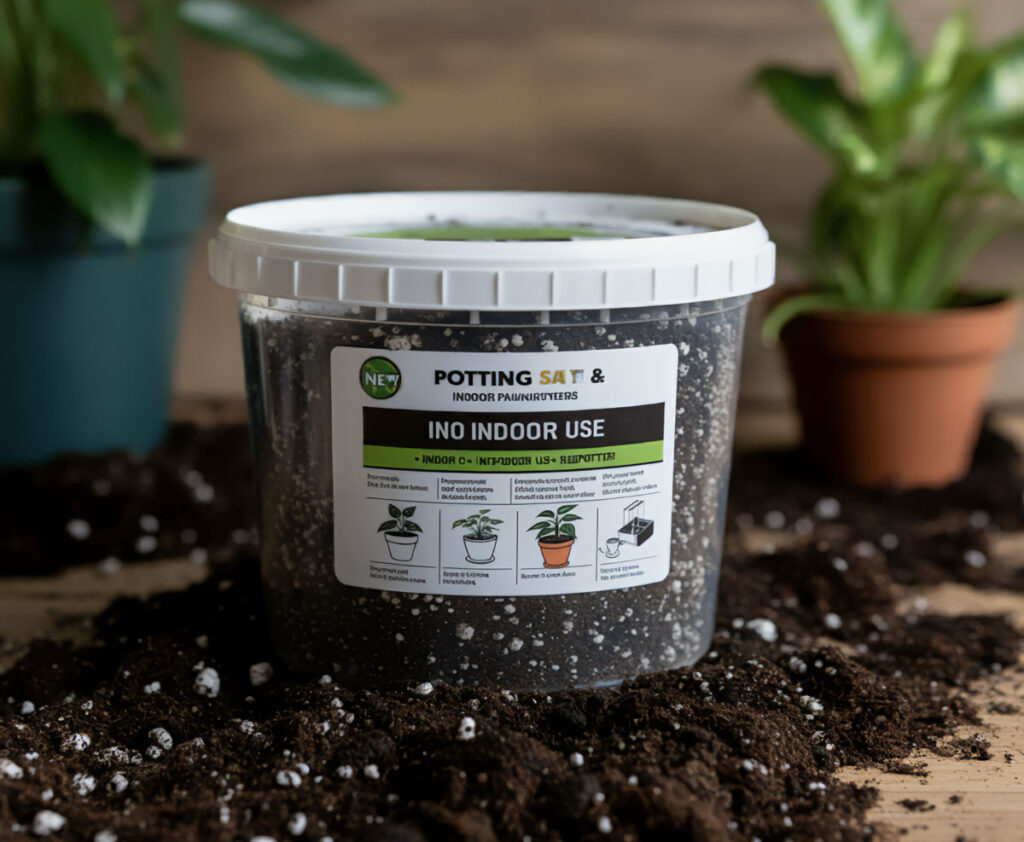
Best soil for houseplants
High-quality houseplant soil is made of different materials that are mixed to create an optimal environment for root growth. This soil allows the roots to breathe well, access water and absorb nutrients. In this case, your green friends will not suffer from overwatering and houseplant root rot and will grow well.
The organic materials in it, such as peat moss or coco coir, can make the soil richer in nutrients and more suited to maintain moisture.
By containing Perlite and vermiculite in the soil, you can improve drainage and aeration. In fact, they make the soil get rid of being compact, and air flows in it so that water can easily pass through it, too, and the houseplant’s roots will not be damaged.
Some houseplant soils with materials such as bark, well-rotted compost, manure, or sand have a better texture and can increase the necessary nutrients in the soil and make your houseplant healthier and stronger.
Soil type and houseplant health
Houseplants come from different habitats and need soil suitable for their original habitat. For example, cacti and succulents come from the desert, where there is little rainfall, and the weather is hot. These houseplants store water in their leaves and stems. I use well-drained soil with sand, gravel, or Perlite so that it drains water quickly and does not keep too much moisture.
Tropical houseplants also come from humid forests, where the air is hot and humidity is high. These houseplants love moisture and need a lot of water. So, I give them soil that keeps moisture well and is rich in nutrients.
Orchids are primarily epiphytes and different from other houseplants. They need a particular soil that holds water like regular soil and has a lot of air so that the roots do not rot. I always use this mixture of bark, charcoal and sphagnum moss for my orchids and have never had a problem.
Using the wrong soil is also harmful for the houseplant. Improper soil keeps the moisture; the roots are waterlogged and suffocated, the needed nutrients do not reach the houseplant and its growth stops.
Houseplant soil and proper drainage
Every houseplant likes its soil to have a good balance between water and air, and good drainage helps in this matter. If the soil drainage is not good, the water collects around the roots, the roots rot, and the houseplant dies.
suppose that the soil is like a sponge; water passes through it, and if the drainage is good, the extra water comes out from the bottom of the pot and the roots can breathe and stay healthy.
Houseplant soil and Suitable pH level
The correct pH prepares the nutrients for the houseplant so that it can absorb them more quickly and grow.
Most houseplants prefer their soil pH to be slightly acidic, I mean pH range soil between 6 and 7, so that essential nutrients such as nitrogen, phosphorus and potassium are more available.
If the pH of the soil is too acidic or too alkaline, the nutrients get stuck in a corner of the soil, and the houseplant cannot use them, causing a lack of nutrients.
So, check the pH of the soil regularly and use lime or sulfur to bring the pH of the soil to a suitable pH.
Comparison of pot soil and garden soil
You should know that potting soil and garden soil are two different types of soil designed for various environments.
Potting soil for houseplants is designed to be light, have good drainage, and be free of any germs and diseases that may harm the plant. It is usually composed of organic materials, Perlite, vermiculite, and sometimes fertilizer, all of which meet the needs of houseplants.
Unlike potting soil, garden soil is heavier and more suitable for outdoor plants. It can hold more water and nutrients, but this feature can cause poor drainage and compaction in the pot, which is not ideal for the roots of indoor plants.
In short, potting soil is a better choice for indoor plants because of its suitable composition for growing in a container.
Changing garden soil for houseplants
If you’re like me and love sustainability and DIY projects, this method is perfect for you.
Before using the garden soil at home, be sure to bake the soil in the oven to remove all kinds of houseplant pests and diseases and weed seeds and protect your houseplant.
Add materials such as Perlite or vermiculite, then peat moss or coco coir and finally, well-rotted compost or manure according to the needs of the houseplant.
Houseplant soil and Organic and Natural Amendments
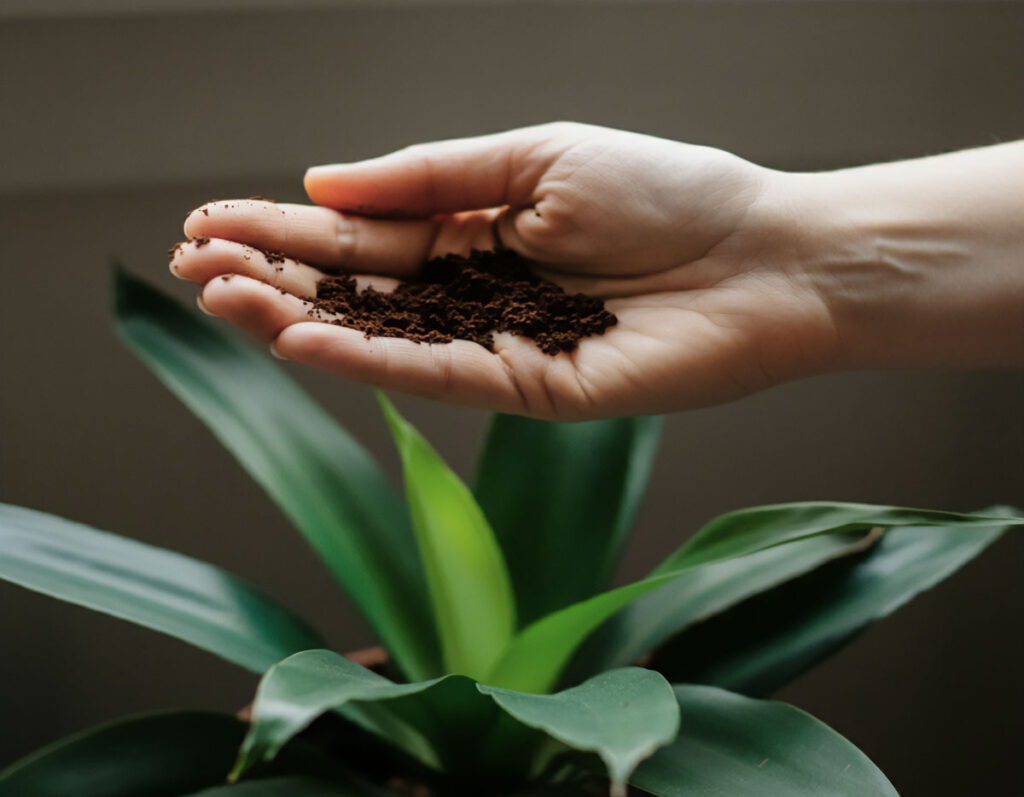
We need organic or natural materials to improve texture, nutrient content and moisture of the houseplant soil.
– If you put a little compost in the soil, it will provide the necessary nutrients for the houseplant and make the soil healthier and more fertile.
– Casting the worm helps the soil retain water better.
– A little coconut coir also helps the soil to maintain water better, and at the same time, it allows the soil to drain easily and the roots of the plant do not get damaged.
– Crushed eggshell adds calcium to the soil, which is beneficial for houseplant growth.
– Coffee grounds also make the soil slightly more acidic, which is helpful for some houseplants that need acidic soil.
Signs of replacing or renewing the soil
If you can understand these signs in time, it will be perfect because all this has a harmful effect on the health of the houseplant and you should go for houseplant repotting.
A Slow-growing houseplant
A fresh and healthy plant should grow fast. But if the soil does not have any food, the houseplant will grow less.
A houseplant with yellow leaves
When the leaves on houseplants turn yellow, the houseplant is telling us that I am suffering from a lack of nutrients or unsuitable soil.
Poor soil water absorption
Good soil absorbs water easily. But if the soil is hard and compact, the water will stay in the soil, or it will leave it very quickly.
Salt Buildup in the soil
The extra salt of the houseplant fertilizer is like a white layer on the soil. It does not allow anything to penetrate the soil.
Musty Smell or Mold
When you hear the smell of mold, it means that the soil is very moist, lacks air, and has roots that are suffocating.
Time to change the houseplant soil
Freshen the potting soil once every 1 to 2 years. In this case, the soil returns its nutrients, air enters it better, and the roots can grow better.
But don’t worry! For large plants or houseplants that grow slowly, we only need to do topdressing, that is, changing a few centimeters from the top of the soil for houseplants.
The effect of pots on houseplant soil
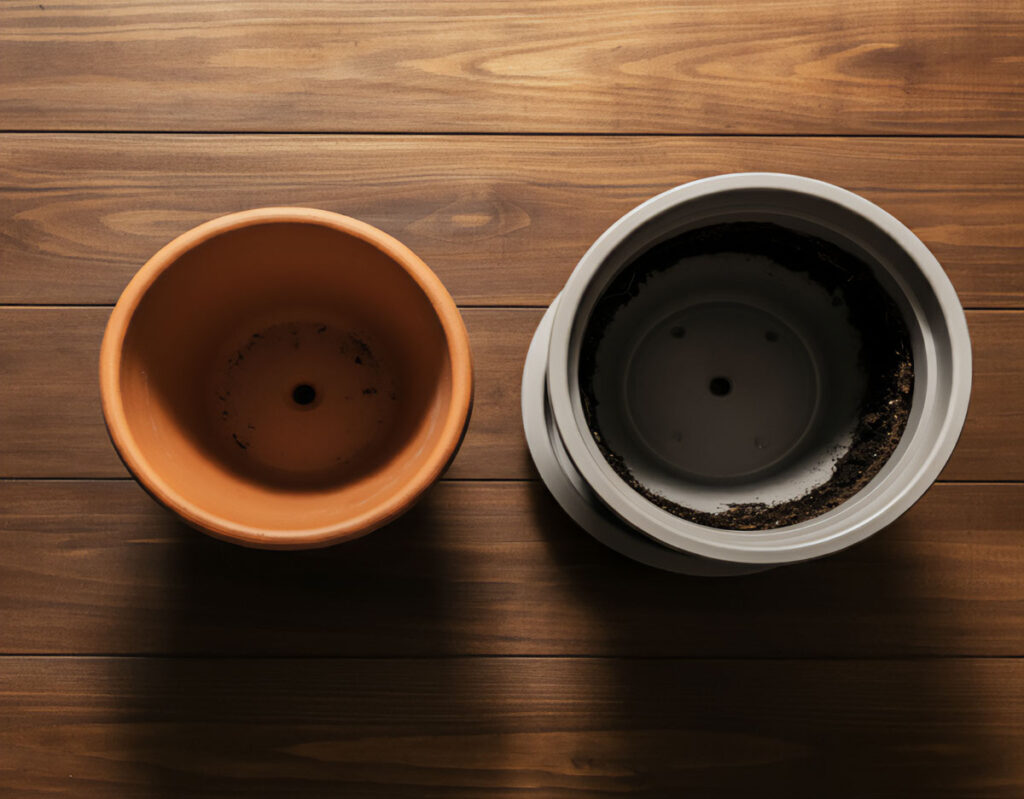
The drainage holes let excess water out of the houseplant pot. If the pot has some holes, the standard soil is enough to manage moisture. Otherwise, you should use soil with good aeration and drainage so that the roots don’t suffocate!
If the pot you bought is clay, I must say that the clay pot absorbs soil moisture, so you need soil with more moisture retention.
But plastic pots keep moisture for longer, so you need well-draining soil.
source:
